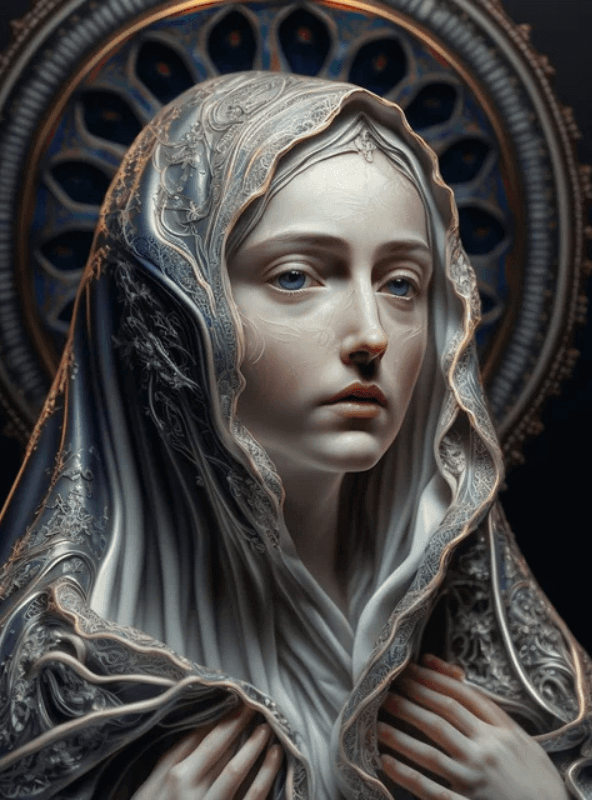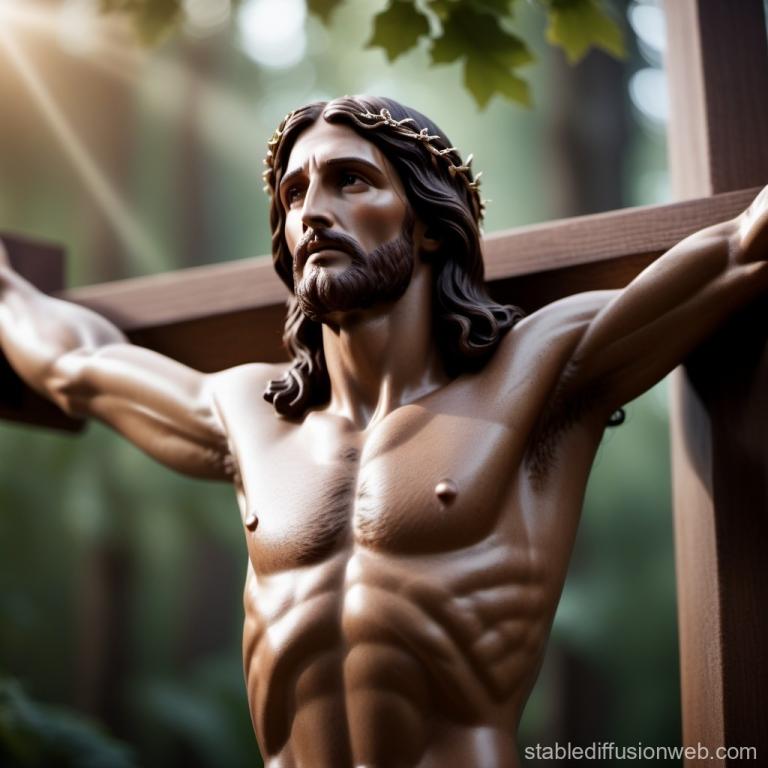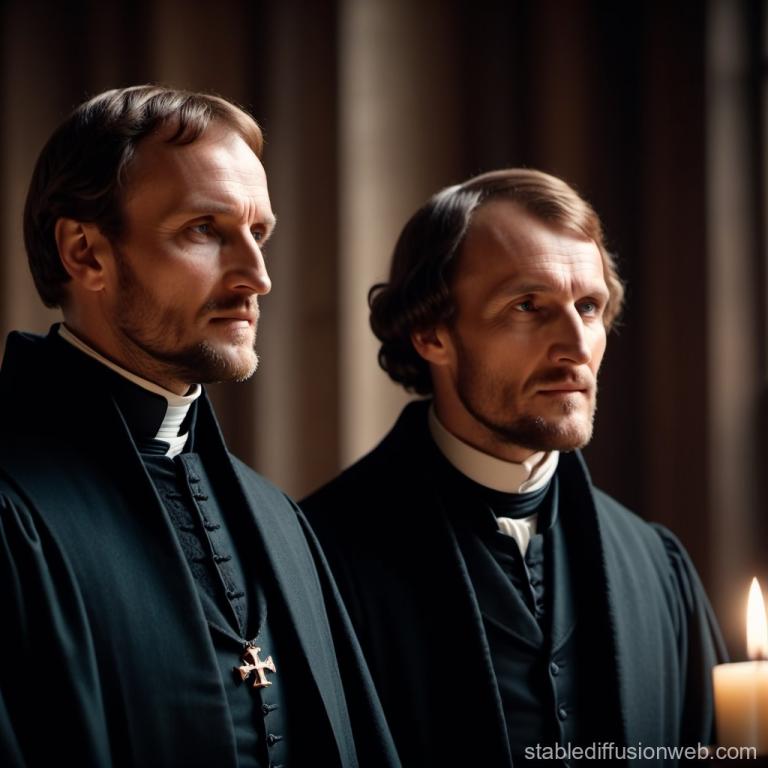Now that freely-available Artificial Intelligence programs can generate images, we are seeing them everywhere. They are especially prominent on internet ads. But can they or should they be used to make sacred art?
You can usually spot an AI-generated face by the smoothness of the skin and how shiny it is. And notice the hands, which often have extra fingers. The expression on the face will often be vacuous, and the background characters will often have distorted, unsettling grimaces.
We’ve blogged about how unintentionally hilarious they can be when they are programmed to follow woke algorithms. But, as a friend of mine who knows more about the technology than I do tells me when I ridicule AI for its mistakes, “It will get better.”
The technology is indeed amazing. You tell the AI chatbot what you want it to depict and it will generate a picture accordingly. (You can try it here.) Using those images when you need a picture is tempting. For one thing, they are free. A court has ruled that only works of art created by a human being can be copyrighted. Those generated by Artificial Intelligence cannot be. This means that users can also freely appropriate AI images made by people with better skills at describing what they want.
I sometimes take longer looking for an illustration for my blog posts (which Patheos requires) than for writing the things. I use the “image search” feature on Google, along with the “usage rights” option to take me to pictures that have a “creative commons” license that allows me to post them without paying for them. I experimented with generating an AI picture once to go with my blog, but the result would give you nightmares. A couple of times I have used AI images devised by other people that come up on “image search,” but only when all else fails.
But is there a religious use of AI images? Can they or should they be used to inspire devotion or Christian meditation? Here are some examples of AI-generated “sacred images” from his article, which I can use freely. He contrasts those with work from a contemporary Christian artist, which I cannot use freely since they will be copyrighted.
Here is St. Joan of Arc:

Here is the Virgin Mary. Look at her hand.

These are from the article. Here is one I generated myself. I asked Stable Diffusion Online to give me an image of “Jesus on the Cross.” Here is what it came up with:

Well, what do you think? Of course, Catholics and the Orthodox have a higher view of “sacred art” than Protestants do. While the Reformed often reject the very concept, to the point of opposing any depiction of Christ or of any figurative art used in church as idolatrous, we Lutherans believe that works of art, while not sacred as such, can have a legitimate use in focusing our imagination on Biblical truths.
What about these? The Crucifixion that I generated seems unduly influenced by wooden crucifixes, so that Jesus has the color of wood. He certainly doesn’t look anguished.
The image of our Lord’s mother is clearly shaped by Catholic devotional depictions–she appears in front of what looks like the Rose Window of a church (or is that supposed to be her halo?)–but her expression is unsettlingly dead. She appears all ethereal and mystically spiritual, not at all like a mother. And the six elongated fingers of her right hand are downright creepy.
Joan of Arc is just the idealized but somber face of a generic girl wearing armor.
Art is thought of as the expression of an artist; that is to say, there is a thinking, feeling, imagining human being behind it. This is especially true of sacred, or religious art. It is, properly, an expression of piety, designed to instill piety in the viewer. To be sure, a non-Christian artist can create a work that can inspire devotion in a Christian. I think of the Jewish painter Marc Chagall’s White Crucifixion. But behind that painting are the distinctly human qualities of compassion, moral questioning, and yearning for meaning.
I know, I know, “they will get better.” But I have the feeling that when you leave the human out of any kind of art it is going to fall short. And that artificial piety will be just as artificial as artificial intelligence.
BONUS: I asked Stable Diffusion to give me a picture of Luther and Melanchthon:

They look more like Wyatt Earp and Doc Holliday! Actually, they look like identical twins.
















